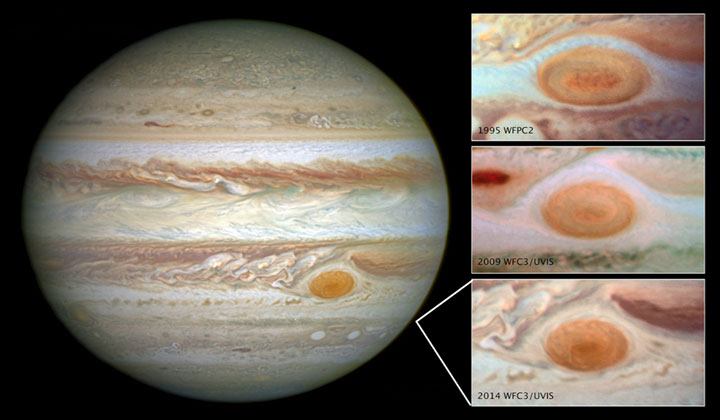LOS ANGELES – A NASA spacecraft is bound for a Fourth of July encounter with Jupiter in the latest quest to study how the largest planet in the solar system formed and evolved.

As Juno approaches Jupiter’s harsh radiation environment, it will fire its main engine to slow down and then slip into orbit around the planet.
READ MORE: WATCH—Possible asteroid explodes in Jupiter’s cloud tops
“It’s a one-shot deal,” mission chief scientist Scott Bolton from the Southwest Research Institute in San Antonio, Texas, said Thursday. “Everything is riding on it.”
If all goes as planned, Juno will spend nearly a year circling Jupiter’s poles and peering through clouds to scrutinize the planet’s southern and northern lights, which are considered the strongest in the solar system.
“Jupiter is a planet on steroids. Everything about it is extreme,” Bolton said during a briefing for reporters from NASA headquarters in Washington.
Since the 1970s, spacecraft have circled or zipped past Jupiter, sending back stunning views of the planet’s signature Great Red Spot — a long-lived storm — and its numerous moons. The most extensive study came from the Galileo spacecraft, which dropped a probe on the surface. Galileo explored Jupiter and its moons for 14 years.
Unlike Earth, which is a rocky planet, Jupiter is a gas giant made up mostly of hydrogen and helium. Scientists still don’t know whether Jupiter has a solid core or how much oxygen and water the planet has — information that could help unravel how Earth and the solar system came to be.
The trip to Jupiter — the fifth planet from the sun — took nearly five years, allowing Juno to loop around the inner solar system and use Earth as a gravitational slingshot to propel itself into deep space.
READ MORE: NASA’s Juno spacecraft one step closer to uncovering Jupiter’s secrets
Previous missions to Jupiter have relied on nuclear power sources because of the distance from the sun. Juno is running on solar power, with three huge panels designed to face the sun during most of the mission. The wings are roughly nine metres long and three metres wide.
Juno will be about 805 million km from the sun on the evening of July 4 when it prepares to enter orbit.
To protect against radiation, Juno’s instruments are tucked inside a titanium vault. The spacecraft also carries a camera and scientists said the public will get a chance to decide what pictures to take.
After Juno completes its mission in 2018, it will plunge into Jupiter and burn up. Scientists planned this finale to eliminate the possibility it could smack into Europa, one of Jupiter’s watery moons.


Comments